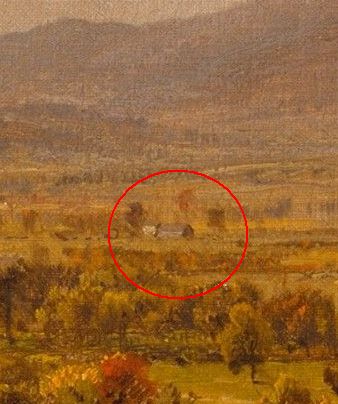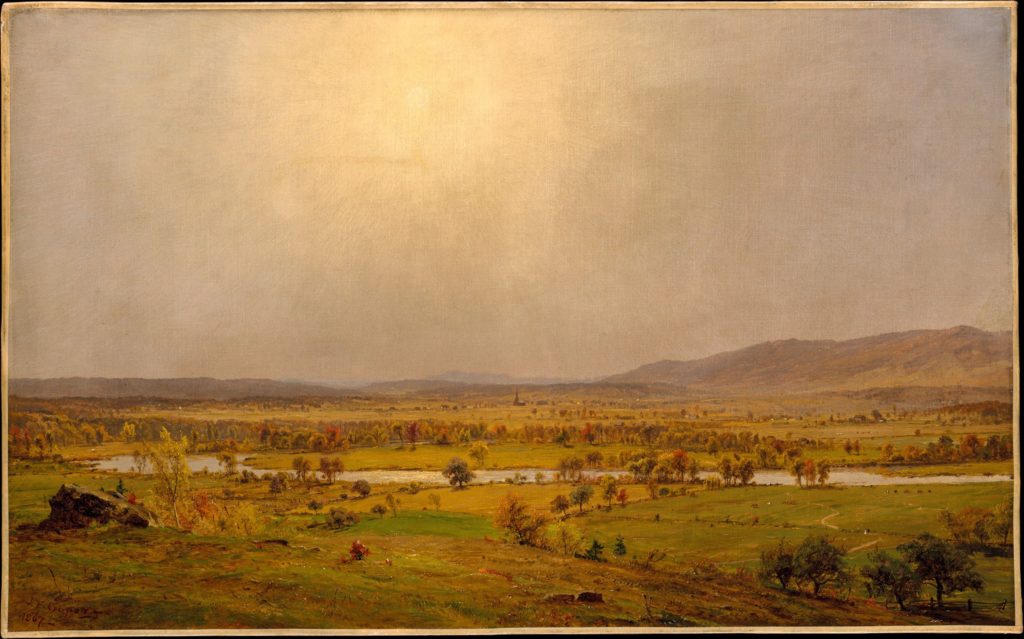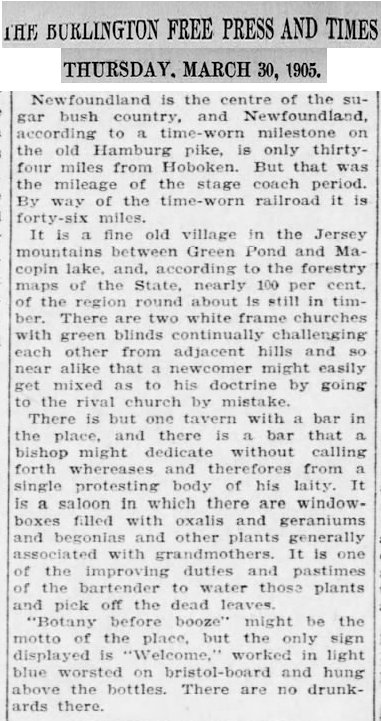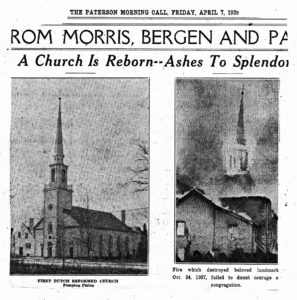“Pompton Plains, New Jersey” is a famous painting by Jasper Francis Cropsey from about 1867.
Opinions differ on just where Mr. Cropsey placed himself while painting this wonderful view of the Pompton Valley. (Maybe if you could find that boulder…) You can see the Pompton River in the foreground; some speculate that the Morris Canal feeder dam lay just beyond the bend.
But if you look closely, right there in the center, is the First Reformed Church of Pompton Plains. (I’ve written about this church before.)
Do you see it? It’s way off in the distance. If you need a hint, here you go. (You can also click on the image above to see it vastly enlarged.)

We modern folk need to keep in mind that, in the 19th Century, the Pompton Valley was pretty empty. There were few buildings, and vast portions weren’t covered by trees as is the case today.
Other buildings in Cropsey’s painting may be identified. For example, this one – to the right of the church – appears to show the Martin Berry House and a barn in front of it. Look for the gap between the mountains in the full-sized image.

Since we know where the church is, it may be possible to identify some of the buildings on either side from other sources.
“Pompton Plains, New Jersey” may be seen at the Metropolitan Museum of Art.




